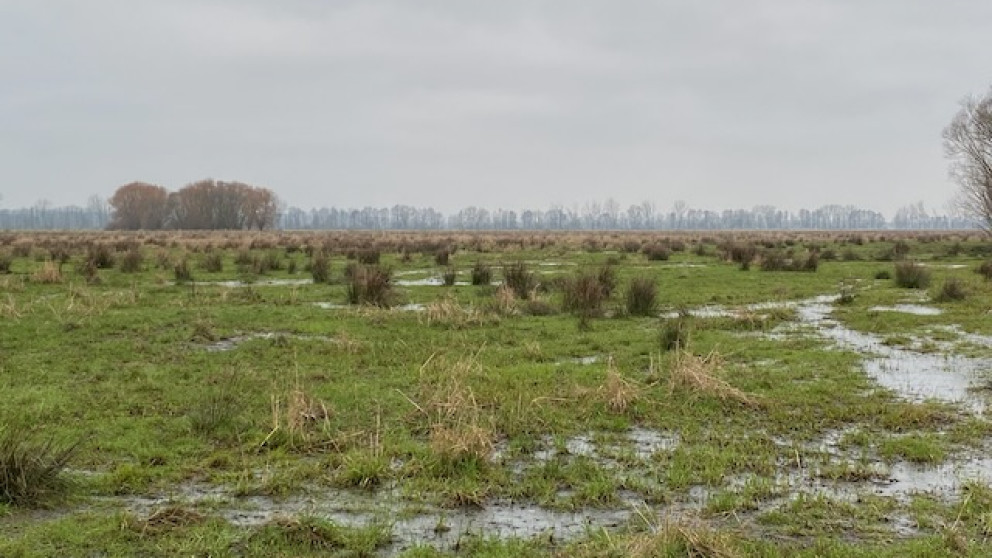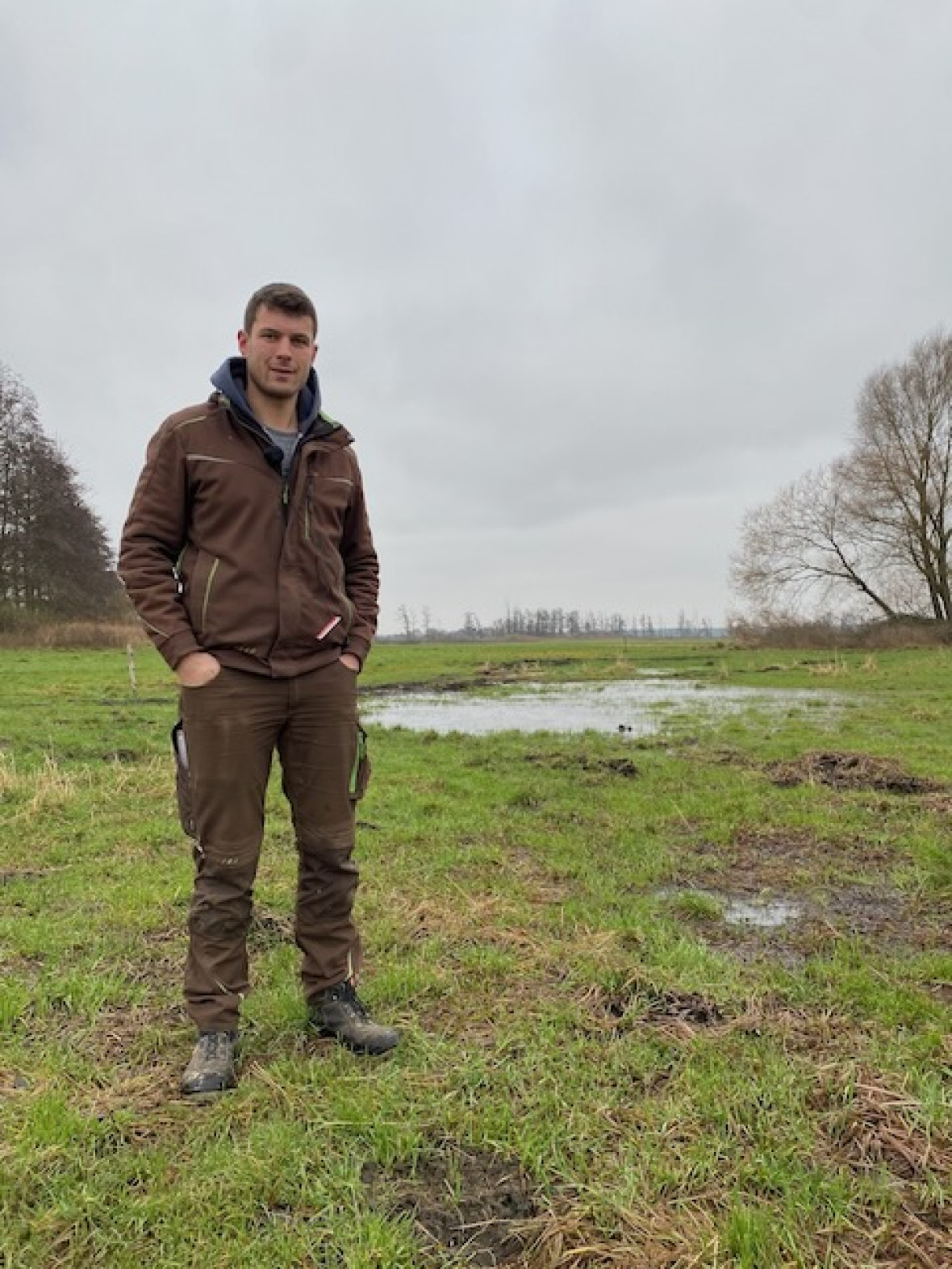Peatlands – Climate Champions or a Source of Emissions?
08.01.2025

Natural peatlands, a type of wetland, store twice as much carbon as all of the world’s forests combined – and they do so on just three percent of the world’s land surface. But peatlands that have been drained – as has been done since the 17th century to create dry land for settlements, farming, and forestry – release that carbon back into the atmosphere. Brandenburg wants to rewet some of its drained peatlands for climate protection and biodiversity restoration. In the seventh episode of the RIFS podcast “Wandel verhandeln. Nachhaltig in Brandenburg” (Negotiating change. Sustainability in Brandenburg), we explore the potential and challenges of this plan.
Every year, drained peatlands emit almost 2 billion tonnes [1] of greenhouse gases, twice as much as the global aviation sector. It thus seems like a climate ‘no-brainer’ to restore degraded wetlands, a nature-based climate solution that has the potential to drastically reduce emissions. But when we look at what that means in practice, the picture becomes more complex. In Germany, for example, nearly 75 percent of drained peatlands are used for agriculture. If these areas should be rewetted in the interest of the climate – as laid out by Germany in its federal climate and peatland protection plans – what does that mean for the future of the farmers in these areas?
As part of our RIFS podcast series Wandel Verhandeln. Nachhaltig in Brandenburg, I set out to find some answers to this question. Brandenburg is a rural federal state in Germany, where drained peatlands – predominantly used for agriculture – are responsible for more greenhouse gas emissions than the whole of Brandenburg’s traffic sector. In 2024 Brandenburg adopted a climate plan that includes measures for rewetting and protecting its peatlands, consistent with the German federal target of reducing the annual emissions from peatlands by 5 million tonnes by 2030. But the road to achieving this target is full of stumbling blocks.

Brandenburg does not plan to convert all of its drained peatlands into rewetted nature conservation areas, which in any case would only be feasible with significant political will and financial compensation schemes to remunerate farmers and landowners for economic losses. Instead, Brandenburg hopes that there is a way to have both: rewetted peatlands and agricultural utilization on the same land. This is a concept referred to as ‘paludiculture.’
In Brandenburg, many drained peatlands are currently being used as grassland for animal feed production. But if the water table is raised to near the soil surface, different types of plants will grow – ones that are not palatable to livestock. Drained peatlands represent about one fourth of Brandenburg’s total agricultural land; a shift to paludiculture in these areas would mean a shift to new types of (non-food) crops: e.g., reeds and bulrushes that could be used as sustainable materials for construction, insulation or packaging. In addition to different crops, paludiculture requires different equipment – conventional tractors sink into wet, boggy ground, which instead requires a tracked vehicle that distributes its weight over the ground more evenly. All of this means anything but business-as-usual for the farmers that are currently cultivating the drained peatlands.
While paludiculture sounds like a pie-in-the-sky idea to some, concrete steps have already been taken to make this vision into a reality – or at least to figure out if it could become a reality. Several 10-year pilot projects with partners from science and practice have been funded with exactly this goal – to test how paludiculture in Brandenburg could work – and in a way that’s not just good for the climate, but also profitable for farmers and businesses (see, e.g., this press release from the Federal Ministry of Food and Agriculture). There are already trailblazers in Brandenburg who have embraced the cause, including a self-proclaimed “Peatland climate farmer” and an “Alliance of Pioneers” from the private sector who aim to establish value chains for paludiculture products. But aside from these early movers, the majority of farmers I heard from remained unconvinced, reluctant to invest in a completely new and unproven business model.
There is some middle ground, in the form of a partial-rewetting solution. If the water table is raised only up to about 30 cm below the surface, it reduces greenhouse gas emissions and farmers can more or less continue with business-as-usual, with the same crops and same equipment. This form of rewetting is also likely to provide additional benefits for agriculture by storing more water in the landscape. It certainly makes sense to take this intermediate step, which also receives a lot support among farmers. As expressed by our interview partner Godehard Stockhoff, whose family runs a farm in Brandenburg:
“Moorland [i.e., peatland] protection is of course very important to us because, especially here in the region, we have relatively sandy soils… And when it gets dry, the water runs out quickly. We can harvest relatively well on these sites because the soil holds so much water, and nobody in this area has an interest in degrading this peatland soil to such an extent…that it can then no longer be cultivated.”
But if we stop at this compromise solution, we have not achieved our climate goals: reaching climate neutrality (i.e., net zero greenhouse gas emissions) by 2045 requires peatland emissions to go to near zero, and that requires a full rewetting. It is too early to say if a paludiculture model for Brandenburg will succeed. But driving a transformation in this direction will ultimately require going beyond pilot projects to develop policies and financial instruments that can support new markets for from paludiculture products.
Literature & Resources
- Peatland Atlas (Boell Stiftung) https://eu.boell.org/en/PeatlandAtlas
- Moor Atlas (Deutsch – Boell Stiftung) https://www.boell.de/de/mooratlas
- MLUK – Moorschutz in Brandenburg https://mluk.brandenburg.de/mluk/de/umwelt/wasser/moorschutz/
[1] Expressed in CO2 equivalents (CO2e). Most of these are CO2 emissions, and the rest are of methane and nitrous oxide.
